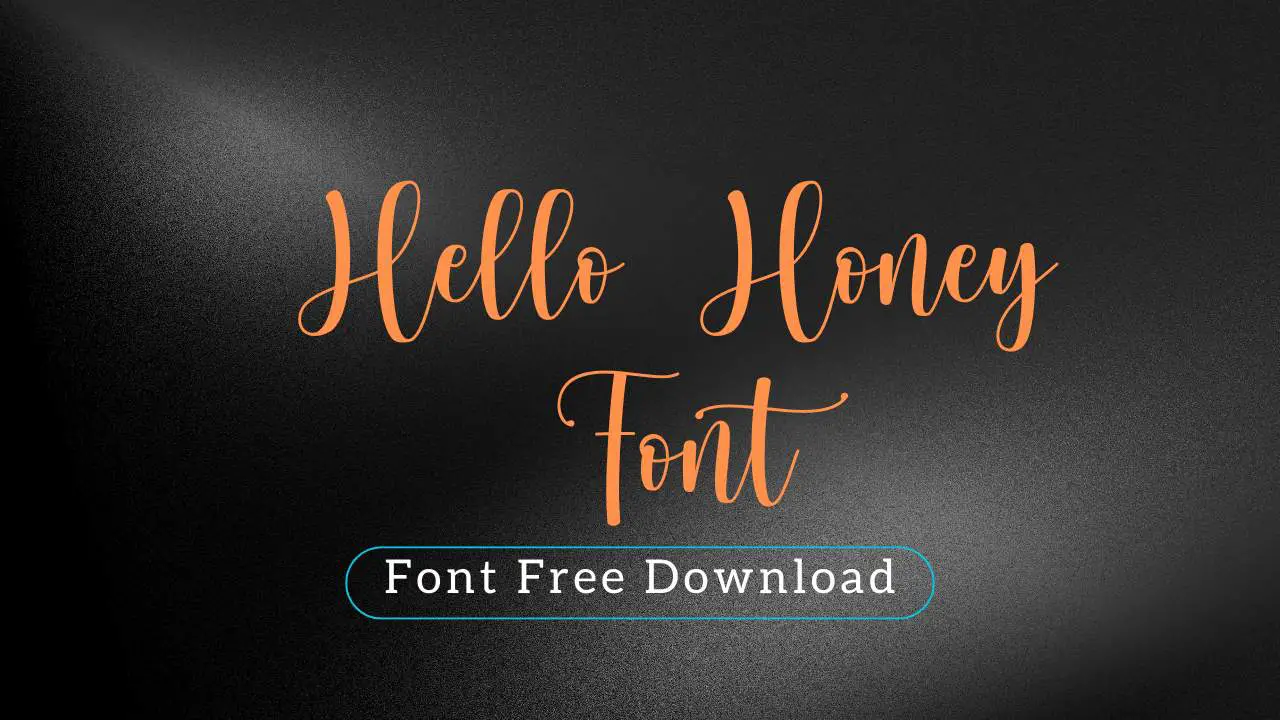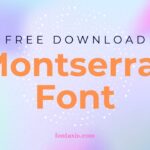NY Times Font for Designers: Essential Choice – It’s often Times New Roman or a similar serif font, chosen for its classic readability and professional look, making it an essential for clear, authoritative design. This guide will help you understand why.
Choosing the right typeface can feel like a big decision for any design project. Many beginners wonder about the fonts that look serious and trustworthy, like those in respected publications. The “NY Times font” is a term that often comes up because of its strong association with clear, high-quality journalism.
Understanding this iconic typeface, and fonts like it, can truly elevate your design work. This guide will break down the essentials, making typography less intimidating and more inspiring. Let’s dive into why certain fonts are so popular and how you can use them effectively.
Understanding the “NY Times Font” Legacy
When people refer to the “NY Times font,” they’re usually evoking a sense of timeless elegance, readability, and authority. For decades, the New York Times relied on a proprietary version of the legendary Times New Roman for its print edition. This choice wasn’t accidental. It was a deliberate decision to prioritize clarity and legibility for a broad readership, ensuring stories could be absorbed with ease.
The Times New Roman typeface, originally designed in the 1930s by Stanley Morison for The Times of London, excelled at fitting a lot of text comfortably on a page without sacrificing readability. Its balanced proportions and distinct serifs make it a workhorse font, perfect for long-form articles and demanding reading environments. This heritage imbues the font, and others like it, with an air of seriousness and trustworthiness that many designers seek.
Why It’s an Essential Choice for Designers
For designers, particularly those new to the field or looking for reliable typographic solutions, fonts with a similar DNA to the “NY Times font” offer several key advantages:
Unmatched Readability
This is the cornerstone. Serif fonts, especially those in the traditional vein, possess a distinct advantage in readability for extended periods of reading. The small strokes (serifs) at the ends of letters help our eyes flow smoothly from one character to the next and one word to the next. This makes them ideal for body text in books, long articles, and reports.
Sense of Authority and Trust
Typefaces that are deeply rooted in print journalism and scholarly publications naturally evoke a sense of authority, credibility, and tradition. Using such a font can lend your designs an immediate air of professionalism and seriousness, making your message more impactful and believable. It’s like wearing a well-tailored suit for a formal occasion – it signifies respect for the context.
Timeless Appeal
Unlike trendy fonts that can quickly become dated, classic serif fonts have a design that transcends fads. They possess a timeless quality that ensures your design will remain elegant and effective for years to come. This makes them a very smart investment for branding and long-term projects.
Versatility in Context
While often associated with formal contexts, these fonts can be surprisingly versatile. When paired strategically with modern sans-serif fonts for headlines or call-to-action buttons, classic serifs can create a rich contrast that is both visually appealing and highly functional. They can anchor a design, providing a stable foundation for more contemporary elements.
Exploring Classic Serif Alternatives
While Times New Roman itself is readily available, it’s worth acknowledging that designers often look for fonts that offer a similar feel but with a unique character or improved digital rendering. The goal is to capture that essence of readability and authority. Here are some excellent alternatives that embody the spirit:
Google Fonts Gems
Google Fonts offers a vast, free library of high-quality typefaces that are perfect for both web and print. Many classic serif options are available:
- Merriweather: Designed to be a comfortable reading font, Merriweather has a slightly wider structure and open counters, enhancing legibility on screens. It’s a robust choice for body text.
- Lora: This well-balanced contemporary serif has roots in calligraphy, offering a touch of elegance without sacrificing readability. It works beautifully for both headlines and longer text.
- EB Garamond: A revival of a classic typeface from the 16th century, EB Garamond offers exquisite detail and historical charm. While more decorative, it’s still legible for carefully chosen applications.
- Playfair Display: This is a more high-contrast serif font, perfect for elegant headlines and short bursts of text. It brings a touch of sophistication and drama.
You can explore all these and more directly on the Google Fonts website.
Adobe Fonts and Premium Options
Subscribers to Adobe Creative Cloud have access to a massive library of fonts through Adobe Fonts. Here are some standouts:
- Garnett Serif: A versatile serif with excellent readability and a modern sensibility, suitable for a wide range of projects.
- Minion Pro: A highly respected and widely used serif typeface known for its clarity, balanced proportions, and classic design. It’s a staple for many professional designers.
- Acumin Pro Wide: While primarily a sans-serif, its designer, Robert Slimbach, also created serif counterparts. Look for their serif options for a cohesive yet distinct look.
- Garamond Premier Pro: A more refined and historically accurate interpretation of the Garamond style, offering exceptional detail and typographic finesse.
System Fonts with a Twist
Beyond Times New Roman, consider other widely recognized system fonts that offer a similar classic feel:
- Georgia: Often available on most computers, Georgia is designed specifically for screen readability, offering a warmer and slightly more humanist alternative to Times New Roman.
- Cambria: Another robust serif font designed for on-screen reading, Cambria is clear, concise, and carries a dignified presence.
Typography Pairing Strategies
The true magic of typography often lies in how different fonts are combined. A classic serif like the “NY Times font” type works exceptionally well when paired thoughtfully. Here are some effective strategies:
Serif Headline, Sans-Serif Body
This is a very popular and effective combination. A strong, attention-grabbing serif font for your headline can convey importance and style, while a clean, highly readable sans-serif font for the body text ensures comfortable reading, especially on screens. The contrast between the two creates visual interest.
Example:
Headline: Playfair Display
Body Text: Open Sans
Sans-Serif Headline, Serif Body
Conversely, you can lead with a modern, sleek sans-serif for your headline to grab immediate attention, and then use a classic serif for the body text to bring in that feeling of tradition, trust, and readability. This pairing offers a sophisticated blend of modern and classic.
Example:
Headline: Montserrat
Body Text: Lora
Using Different Weights and Styles
Within a single font family, you can create contrast and hierarchy. For instance, use a bold, italic, or light weight from a serif family for headings or subheadings, while sticking to the regular weight for the main body. Many font families, especially those designed for professional use, offer a wide range of weights and styles that can create a harmonious and varied typographic hierarchy.
Practical Application for Designers
Let’s break down how you can practically implement these principles in your design work, whether for print or digital.
Branding and Logos
For businesses aiming to project reliability, expertise, or a heritage feel, a classic serif font can be an excellent choice for a logo. It conveys a sense of established quality. For instance, financial institutions, law firms, or luxury brands often leverage this aesthetic.
Website Design
On the web, readability is paramount. While many designers opt for sans-serifs for body text due to historical rendering issues, modern web technologies have made serifs much more viable and beautiful online. Ensure you’re using web-optimized fonts (like those from Google Fonts or Adobe Fonts) and test them on various screen sizes. Using a serif for body text on a blog designed to mimic a magazine, for example, would be very effective.
Print Materials
For brochures, reports, books, and magazines, classic serifs truly shine. They provide that essential readability for longer texts and lend a professional, polished feel to the final output. Think about using a strong serif for the main content and a complementary sans-serif for captions, pull quotes, or sidebars.
Content Creation
If you run a blog or create content for platforms that emphasize thoughtful, in-depth articles, using a serif font for your primary text can subconsciously encourage readers to engage with longer pieces. It signals that your content is well-researched and worth dedicating time to.
Key Considerations for Optimal Use
To ensure your use of classic serif fonts is successful, keep these tips in mind:
Mind the X-Height
The x-height is the height of a lowercase letter, such as ‘x’. Fonts with a larger x-height tend to appear more readable at smaller sizes because the lowercase letters are taller and more distinct. Fonts like Merriweather are designed with this in mind.
Contrast is Key
For digital interfaces and even some print designs, consider the contrast between your text color and background color. Ensure sufficient contrast for accessibility and readability. Tools like the WebAIM Contrast Checker can help you meet accessibility standards.
Kerning and Tracking
While most fonts come with good default spacing, fine-tuning the kerning (space between individual letter pairs) and tracking (overall letter spacing) can make a significant difference, especially for headlines and important text. Modern design software offers these controls.
Font Size Matters
For print, body text is often set between 9-12 points for classic serifs. For web, a common range is 16-24 pixels, but this can vary greatly depending on the font and design. Always test your sizes across different devices and contexts.
Licensing and Usage
When using premium fonts, always check their licenses. Google Fonts and Adobe Fonts are generally very user-friendly in terms of licensing for both personal and commercial projects. Be aware of restrictions if you’re using paid fonts.
Comparing Font Types in Practice
To further illustrate, let’s look at a simplified comparison of how different font types might be used, keeping the “NY Times font” style in mind.
| Font Type | Characteristics | Common Use Cases | “NY Times Font” Equivalent Style |
|---|---|---|---|
| Serif | Has small decorative strokes (serifs); generally perceived as traditional, classic, and highly readable for long bodies of text. | Books, newspapers, academic papers, formal websites, body text. | Times New Roman, Garamond, Minion Pro, Lora. |
| Sans-Serif | Lacks serifs; perceived as modern, clean, minimalist, and often good for digital interfaces and headlines. | Websites (especially for UI elements), logos, headlines, signage, captions. | Helvetica, Arial, Open Sans, Montserrat. |
| Display | Highly stylized and attention-grabbing; designed for headlines and short bursts of text, typically not suitable for body copy. | Posters, book covers, exhibition titles, branding elements where strong visual impact is needed. | Playfair Display (can lean towards display for large sizes), many decorative and script fonts. |
| Script | Mimics handwriting or calligraphy; can range from elegant and formal to casual and fun. | Invitations, wedding stationery, personal branding, decorative accents. | Not directly comparable to the “NY Times font,” but can be used as an accent with a classic serif body. |
As you can see, while the “NY Times font” falls squarely in the serif category, understanding the broader landscape of font types allows for more dynamic and creative pairings. The goal is often to combine their strengths.
Conclusion
The enduring appeal of the “NY Times font” and its kin lies in their inherent ability to communicate with clarity, authority, and timeless elegance. For designers at any level, understanding the power of classic serif typefaces is an essential step in building a robust typographic toolkit. Whether you’re aiming for a highly readable website, a professional print publication, or a credible brand identity, drawing inspiration from these foundational fonts will serve you well.
Don’t be afraid to experiment with these classic choices. Explore the vast resources available and practice pairing them with modern sans-serifs or using different weights within a family. The key is to always prioritize readability and to let your chosen typography enhance, not detract from, your message. By embracing the principles behind these “essential” fonts, you can make smarter, more impactful design decisions that resonate with your audience and stand the test of time. Happy designing!
Frequently Asked Questions
What font does the New York Times actually use?
The New York Times has used several fonts over its history. The most iconic and widely recognized typeface associated with the Times is Times New Roman, or more specifically, a version of it known as Columbia. However, for its digital presence and some print elements, they also use custom sans-serif and serif fonts, often commissioned from renowned type foundries. The key takeaway is a focus on readability and a classic, authoritative feel.
Why is the “NY Times font” so popular for designers?
Its popularity stems from its heritage of readability and its association with credibility and trust. For designers, it signals professionalism, seriousness, and a commitment to clear communication, making it a go-to for projects that need to convey authority and elegance.
Can beginners use serif fonts like the “NY Times font”?
Absolutely! Serif fonts are excellent for beginners. Their small decorative strokes, or “serifs,” actually help guide the eye along the line of text, making them incredibly readable, especially in longer passages of print. They offer a classic and sophisticated look that’s easy to work with.
What’s the difference between a serif and a sans-serif font?
A serif font has small decorative strokes (serifs) at the ends of its letters, like the one you’re reading now. A sans-serif font does not have these strokes, appearing more modern and clean. Think of Helvetica or Arial as examples of sans-serif fonts.
Where can I find fonts similar to the “NY Times font”?
Many font libraries offer fonts that share characteristics with Times New Roman. Look for classic serif fonts. Websites like Google Fonts, Adobe Fonts, and dedicated font marketplaces have extensive collections where you can find excellent alternatives.
Is the “NY Times font” good for web design?
Yes, with careful implementation. While Times New Roman is a system font and very web-safe, modern web design often favors other serif fonts that are optimized for screens. However, the style of clarity and readability it embodies is crucial for web design, so many designers draw inspiration from it.







